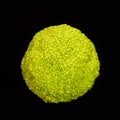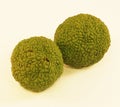Designed by
Title
Osage Orange #315436455
Description
 orange is a small to medium-sized tree with thorny branches and deeply furrowed bark that can grow up to 65 feet tall. It's also known by many other common names, including hedge apple, horse apple, and bois d'arc. ?Oklahoma Department of Wildlife ConservationWildlife Food for Thought: Osage Orange4 Oct 2021 â The tree dubbed with the scientific name Maclura pomifera goes by many common names, including Osage orange, hedge apple, horse apple, and bois d'arc. However, it's neither an apple or an orange, but rather a member of the mulberry family. Image. Osage orange tree, with fruit.?USDA Plants DatabaseOsage orange, Maclura pomifera, plant fact sheetThe name Maclura pomifera comes from William Maclure (1763 â 1840) an early American geologist; and pomifera which means âfruit-bearingâ for. Page 2. the large fruits that it produces on the female trees. It is a small to medium size tree 36 to 65 feet tall, with deeply furrowed bark and thorny branches. The trunk is ...From GoogleGoogle's Knowledge Graph provided information for this overviewOsage orange is a member of the mulberry family, but it's not an apple or an orange. It produces large fruits on female trees, but humans and foraging animals rarely eat the fruit due to its latex secretions and woody pulp. Osage orange grows best in full sun and moist, well-drained soil. It can tolerate a wide range of soil types, including wet sites, road salt, dry sites, occasional drought, and occasional flooding. It can be used as a hedge row plant for property lines or as windbreaks, while male trees can be effective shade trees in the corners of the landscape. However, female trees are generally not recommended for landscape use because the fruits pose a considerable litter problem. Osage orange has several biological activities, including estrogenic, antibacterial, antifungal, antiviral, antimalarial, cytotoxic, and antitumor. For example, Comanche Indians in North America used the Osage orange roots decoction to treat sore eyes.Â

















